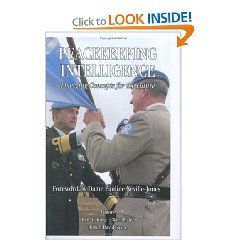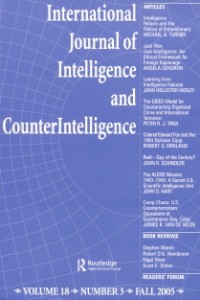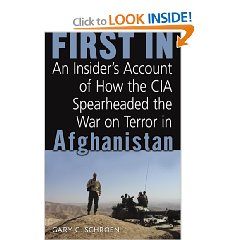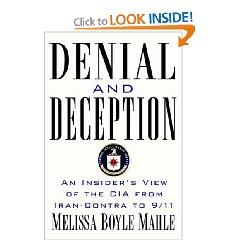EDIT of 20 Dec 07 to add links.
This is a superb first-person account. I have absolute and total respect for this officer, his team, his courage, and what he accomplished within weeks of 9-11, setting the stage for a new form of warfare in which CIA opened the door, Special Forces turned on the lights, and conventional Air Force leveled the place.
The book provides some extremely useful insights from the field with respect to Washington's failure to understand local politics and ground truth despite frequent detailed field appraisals from the Chief of Station, and the book makes it clear that Pakistan lobbied Washington strategically and ably to “sell” its plan for taking over Afghanistan with its own allies, against both Russian and US (and for that matter, Chinese) best interests.
There are five substantive military insights in this book:
1) Despite their enormous personal courage and high level of training, the US military special forces are handicapped by a joint defense-level policy that will not do deep bombing unless a Search & Rescue (SAR) capability is readily available. I recall the original Office of Strategic Services dropping people behind enemy lines (the pilots understood they might be shot down as part of the deal) and I just think to myself, shame on DoD, this force protection zero tolerance for casualties has gone too far. We need a Chairman of the Joint Chiefs with the balls to change the military culture back to one that is mission oriented rather than casualty averse.
2) Partly as a result of Pakistani influence [the author notes that the Pakistanis co-opted the CIA Station in Pakistan, not just the State Department and NSC in Washington] and point one above, the targeting authorities (CENTCOM and the Air Force) were very slow to act professionally on the targets identified by the Northern Alliance and the CIA field teams. I was enormously impressed by the GPS field surveys that the CIA team carried out, and under-whelmed by the Air Force focus on warehouses near Kabul rather than specified armed forces blocking the Northern Alliance path toward Kabul. I also noted in the margin, having some experience with provincial and tribal intelligence, that the US decision system is still too focused on state to state Ambassadorial level negotiations, and largely ignorant of and uninterested in the nuances of sub-state tribal views and concerns. That needs urgent fixing.
3) The Special Forces, despite their reputation for fearless operations behind enemy lines, were led by officers who insisted that they wear their proper military uniforms and shave every day. I have met the two-star general that gave and then enforced this order, and consider him a superb–absolutely top-notch–officer in terms of military skills, but the man is so culturally clueless as to give new meaning to the term oblivious. As a side note, thinking back to Steve McQueen in the great escape, it occurred to me that we need to establish a protocol under the Geneva Convention in which military personnel and overt intelligence personnel can blend into the local population to avoid cultural dissonance, but wear a small patch, clearly visible to those they see face to face–something like a SOF spear, with miniature rank on one side and miniature service seal on the other side, all within a two-inch wide circle.
4) PAVE LOW missed the Landing Zone (LZ) during the first and most critical Special Operations team insertion. Now, this could have happened if CIA provided the military with the wrong coordinates (or used Russian coordinates while the Americans were on another system), but this should never have happened. It also points out that the military and CIA evidently did not have the ability to talk to each other tactically on the final approach, which reminds me of our Marines not being able to talk to the US Embassy in Somalia as they completed their 400 nautical mile run just in time to stop the people from over-running the place. How is it that something as critical as masked inter-agency tactical communications can still not be achieved? INTER-4 Tacticomps with S-MINDS and CISCO AONS for all hands ASAP.
5) Air Force blew the first food-drop, dropping the packets from 27,000 feet without parachutes. What this made clear to me is that we have a peacetime Air Force (see my review of “Rules of the Game” by Andrew Gordon) that has forgotten how to do nuanced missions, especially those requiring that they do something other than deliver cargo conventionally or drop bombs.
The author ends the book more or less on page 363, where he suggests that a combined CIA and SOF campaign circling Waziristan, is needed. While he underestimates the denied area aspect of this zone, I agree that the Pakistanis are playing the Americans for fools, and I agree that there should be no area of the world where US forces cannot operate if they must.
The author loses one star, with some understanding, for failing to provide context and failing to acknowledge that his heroic mission was required because CIA did not take Afghanistan seriously before and after Charlie Wilson. Three other books, at least, must be read to understand this:
Charlie Wilson's War: The Extraordinary Story of How the Wildest Man in Congress and a Rogue CIA Agent Changed the History of Our Times
Ghost Wars: The Secret History of the CIA, Afghanistan, and Bin Laden, from the Soviet Invasion to September 10, 2001
The Main Enemy: The Inside Story of the CIA's Final Showdown with the KGB
The compansion to this book is Jawbreaker: The Attack on Bin Laden and Al-Qaeda: A Personal Account by the CIA's Key Field Commander
I had a chance to talk to a CENTCOM officer informally about all this, and welcomed his observation that CIA does not always have the facts when it comes to their perception of military “mistakes.” We also talked about the need for a new approach to global intelligence. It is crystal clear to me that we need to have CIA/SOF bases all over the world that are under non-official cover and that work every major tribe and province. For every province, including especially provinces in denied areas, there must be at least one SOF-qualified sleeper able to receive a clandestine arrival, or provide the first stop for a SAR exit.
I'm glad they made it back-this was true grit and deep honor in action.
See also (with reviews):
Legacy of Ashes: The History of the CIA
None So Blind: A Personal Account of the Intelligence Failure in Vietnam
Who the Hell Are We Fighting?: The Story of Sam Adams and the Vietnam Intelligence Wars
On Intelligence: Spies and Secrecy in an Open World
Nation of Secrets: The Threat to Democracy and the American Way of Life









